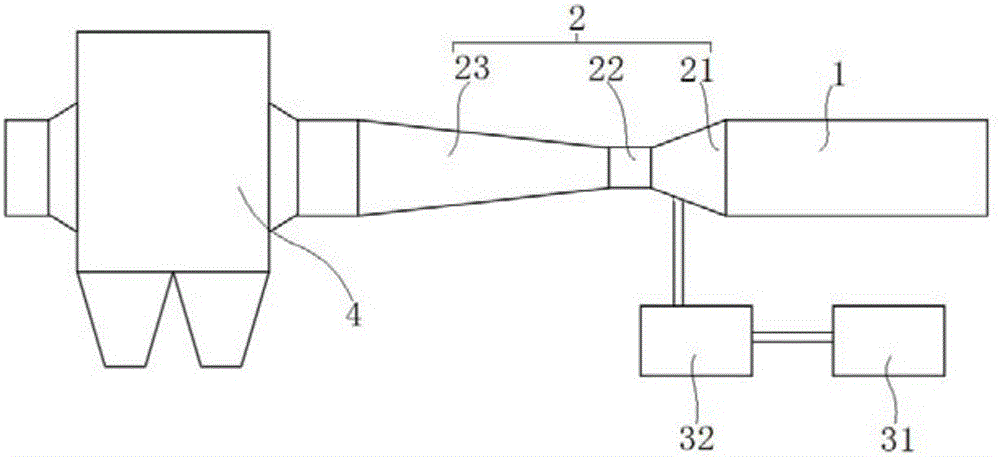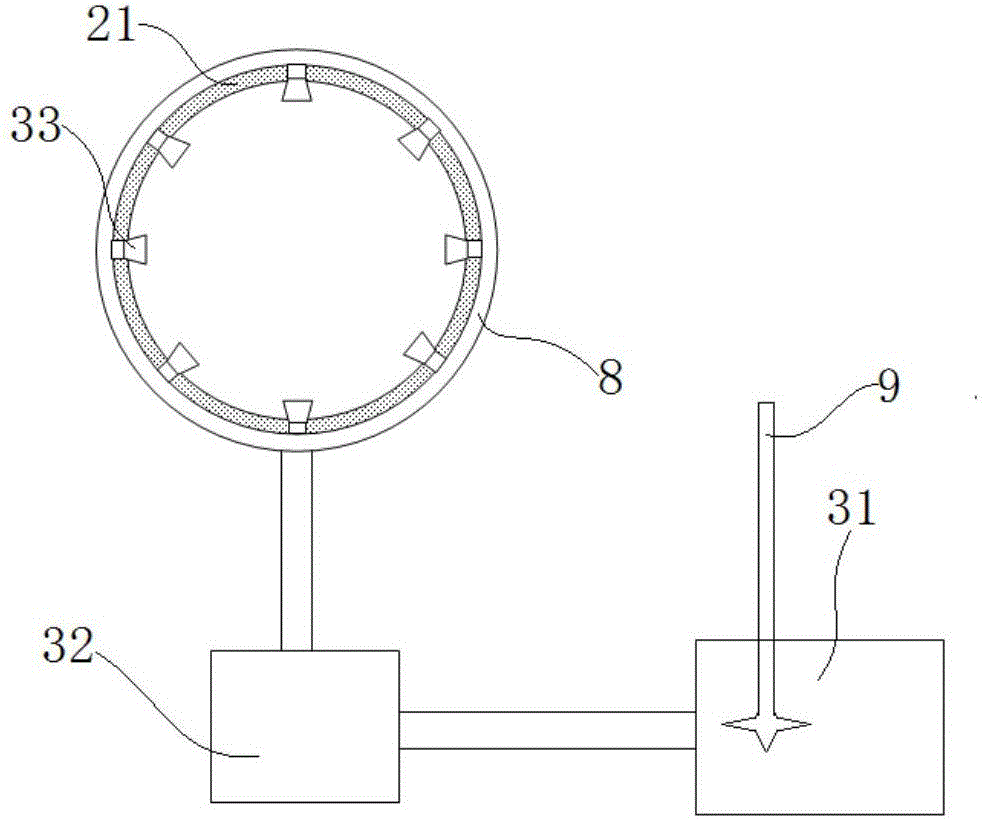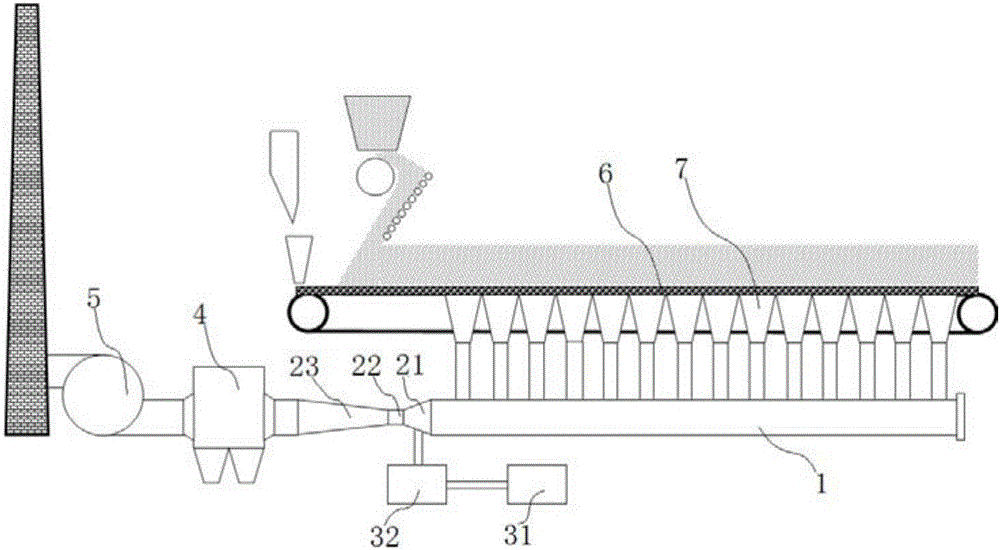Emission reduction system for fine particles in sintering process of iron ore
A fine particle and sintering process technology, applied in the direction of dispersed particle separation, gas treatment, membrane technology, etc., can solve problems such as complex composition, complex flue gas composition, and large flue gas flow
- Summary
- Abstract
- Description
- Claims
- Application Information
AI Technical Summary
Problems solved by technology
Method used
Image
Examples
Embodiment 1
[0058] combine figure 1 , 2 , 3 and 4, a kind of iron ore sintering process fine particle emission reduction system of the present embodiment includes a fine particle atomization and agglomeration device 2, agglomeration liquid adding device 3 and dust removal device 4, and the sintering mixture is mixed, prepared After granulation, the material distributing device is installed on the sintering trolley 6. The sintering mixture is ignited and then ventilated and sintered. The sintering flue gas passes through the sintering material layer. The bottom of the sintering trolley 6 is connected to the main flue 1 through the bellows 7. The draft flue gas flows into the main flue 1 from the bottom of the sintering trolley 6 through the bellows 7. The main flue 1 is equipped with an atomization agglomeration device 2, an agglomeration liquid adding device 3 and a dust removal device 4. The flue gas flows into the main flue 1. The atomization agglomeration device 2 is discharged into t...
Embodiment 2
[0105] The basic content of this embodiment is the same as that of Example 1, except that the additive is composed of activated carbon and zeolite, and the additive is composed of the following mass percentages: 85% of activated carbon and 15% of zeolite, and the particle size of the activated carbon requires: 74μm≤activated carbon particle size≤100μm, zeolite particle size requirement: 74μm≤zeolite particle size≤100μm.
[0106] Detect the emission concentration of PM2.5 and PM10 in the sintering flue gas after the dust removal device 4, and calculate the emission reduction efficiency of PM2.5 and PM10. The emission reduction efficiency of PM2.5 is 56.4%, and the emission reduction efficiency of PM10 is 49.0%.
Embodiment 3
[0108] The basic content of this embodiment is the same as that of Example 1, except that the additive is composed of activated carbon and zeolite, and the additive is composed of the following mass percentages: 95% of activated carbon and 5% of zeolite.
[0109] Detect the emission concentration of PM2.5 and PM10 in the sintering flue gas after the dust removal device 4, and calculate the emission reduction efficiency of PM2.5 and PM10. The emission reduction efficiency of PM2.5 is 60.2%, and the emission reduction efficiency of PM10 is 48.8%.
PUM
| Property | Measurement | Unit |
|---|---|---|
| Particle size | aaaaa | aaaaa |
| Particle size | aaaaa | aaaaa |
Abstract
Description
Claims
Application Information
 Login to View More
Login to View More - R&D
- Intellectual Property
- Life Sciences
- Materials
- Tech Scout
- Unparalleled Data Quality
- Higher Quality Content
- 60% Fewer Hallucinations
Browse by: Latest US Patents, China's latest patents, Technical Efficacy Thesaurus, Application Domain, Technology Topic, Popular Technical Reports.
© 2025 PatSnap. All rights reserved.Legal|Privacy policy|Modern Slavery Act Transparency Statement|Sitemap|About US| Contact US: help@patsnap.com



